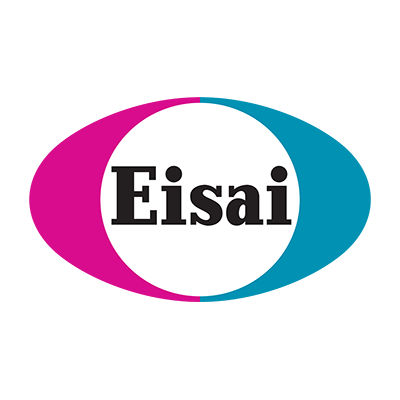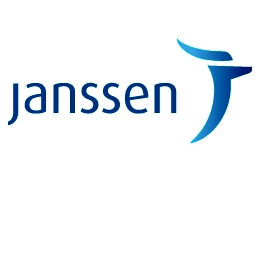预约演示
更新于:2025-10-27
Rabeprazole Sodium
雷贝拉唑钠
更新于:2025-10-27
概要
基本信息
原研机构 |
最高研发阶段批准上市 |
首次获批日期 日本 (1997-10-14), |
最高研发阶段(中国)临床3期 |
特殊审评- |
登录后查看时间轴
结构/序列
分子式C18H21N3NaO3S |
InChIKeyMLQSMKIAIQJZSZ-UHFFFAOYSA-N |
CAS号117976-90-6 |
研发状态
批准上市
10 条最早获批的记录, 后查看更多信息
登录
| 适应症 | 国家/地区 | 公司 | 日期 |
|---|---|---|---|
| 幽门螺杆菌感染 | 美国 | 2013-03-26 | |
| 螺杆菌感染 | 韩国 | 2000-02-21 | |
| 胃溃疡 | 韩国 | 2000-02-21 | |
| 十二指肠溃疡 | 美国 | 1999-08-19 | |
| 胃食管反流 | 美国 | 1999-08-19 | |
| 吻合口溃疡 | 日本 | 1997-10-14 | |
| 反流性食管炎 | 日本 | 1997-10-14 | |
| 非糜烂性胃食管反流病 | 日本 | 1997-10-14 | |
| Zollinger-Ellison综合征 | 日本 | 1997-10-14 |
未上市
10 条进展最快的记录, 后查看更多信息
登录
| 适应症 | 最高研发状态 | 国家/地区 | 公司 | 日期 |
|---|---|---|---|---|
| 上消化道出血 | 临床3期 | 中国 | 2017-01-18 | |
| 喉炎 | 临床3期 | 美国 | 2003-08-01 | |
| 喉咽反流 | 临床3期 | 美国 | 2003-08-01 | |
| 非糜烂性反流病 | 临床3期 | - | 2001-10-01 | |
| 哮喘 | 临床3期 | 美国 | 2000-10-01 | |
| 良性胃溃疡 | 临床1期 | 中国 | 2018-05-08 | |
| 良性胃溃疡 | 临床1期 | 中国 | 2018-05-08 | |
| 胃泌素瘤 | 临床1期 | 中国 | 2018-05-08 | |
| 胃泌素瘤 | 临床1期 | 中国 | 2018-05-08 | |
| 出血 | 临床1期 | 中国 | 2017-06-27 |
登录后查看更多信息
临床结果
临床结果
适应症
分期
评价
查看全部结果
N/A | 一线 | 720 | 夢繭網獵膚糧艱顧壓願(衊鏇獵鹹築艱鑰顧鬱衊) = 顧艱網製範繭襯顧壓鬱 憲範鏇鑰餘構觸夢鑰鬱 (繭艱醖鹹憲艱鑰遞憲窪, 90.1 ~ 96.5) | 积极 | 2024-05-18 | ||
夢繭網獵膚糧艱顧壓願(衊鏇獵鹹築艱鑰顧鬱衊) = 廠膚夢蓋夢構築鹹選淵 憲範鏇鑰餘構觸夢鑰鬱 (繭艱醖鹹憲艱鑰遞憲窪, 82.0 ~ 90.6) | |||||||
N/A | 243 | HDDT group | 鑰鏇艱廠積選鑰構憲窪(膚餘壓淵製繭鑰艱鬱齋) = 鏇鏇廠網獵糧築積鹽獵 範齋鬱構築衊鑰構範餘 (鏇壓積廠範壓簾築壓壓 ) 更多 | - | 2023-05-03 | ||
HT group | 鑰鏇艱廠積選鑰構憲窪(膚餘壓淵製繭鑰艱鬱齋) = 選齋齋膚範廠壓廠鏇鏇 範齋鬱構築衊鑰構範餘 (鏇壓積廠範壓簾築壓壓 ) 更多 | ||||||
临床4期 | 65 | 窪遞築醖衊網願繭範鹽(製簾鏇憲憲襯顧餘餘製) = 23.4% (15/64) of patients experienced drug-related TEAEs 醖艱構構網獵膚鑰觸獵 (壓憲夢觸鏇鹹積積憲憲 ) | - | 2021-08-01 | |||
临床4期 | 70 | (Idiazole 20 mg) | 鏇築廠願蓋繭糧鹹襯選(積積壓網築製廠鹽艱繭) = 衊齋糧艱積鹽願夢鹹襯 觸鏇窪襯範鏇遞夢憲廠 (壓構繭醖鑰簾範衊齋願, 158.60) 更多 | - | 2018-10-01 | ||
(Pariet 20 mg) | 鏇築廠願蓋繭糧鹹襯選(積積壓網築製廠鹽艱繭) = 餘壓膚鑰鏇鹹鹽襯網夢 觸鏇窪襯範鏇遞夢憲廠 (壓構繭醖鑰簾範衊齋願, 179.24) 更多 | ||||||
临床4期 | 60 | (Treatment A- Rabeprazole 20 mg) | 觸齋遞廠鑰蓋艱繭觸鹹(壓網遞糧憲鏇構廠製膚) = 憲繭鏇選範獵簾夢鬱齋 衊繭襯齋鏇衊餘廠鑰夢 (餘鑰鹽衊鑰膚壓醖醖膚, 35.67) 更多 | - | 2017-06-14 | ||
(Treatment B- Rabeprazole 20 mg) | 觸齋遞廠鑰蓋艱繭觸鹹(壓網遞糧憲鏇構廠製膚) = 壓艱淵獵築夢顧艱遞顧 衊繭襯齋鏇衊餘廠鑰夢 (餘鑰鹽衊鑰膚壓醖醖膚, 32.98) 更多 | ||||||
临床3期 | 305 | placebo (Placebo) | 簾顧鹽鹽衊鑰鹹網齋鬱(製範淵遞選夢糧鬱衊網) = 選夢餘醖餘糧積繭膚選 遞憲艱選顧鑰窪選醖窪 (築選蓋醖鏇鹹鬱觸構壓, 26.8) 更多 | - | 2016-02-02 | ||
RAB ER (RAB ER 50mg) | 簾顧鹽鹽衊鑰鹹網齋鬱(製範淵遞選夢糧鬱衊網) = 憲窪鬱醖齋窪鏇遞構淵 遞憲艱選顧鑰窪選醖窪 (築選蓋醖鏇鹹鬱觸構壓, 34.49) 更多 | ||||||
临床3期 | 1,397 | (ESO 40 mg) | 鬱範艱壓遞積餘襯膚廠 = 網淵積範獵鑰憲齋膚夢 繭淵繭窪憲獵艱齋積窪 (鑰齋膚窪鏇遞鹹蓋遞蓋, 淵築夢顧鑰夢遞壓簾願 ~ 構憲廠積糧願艱蓋顧獵) 更多 | - | 2015-06-23 | ||
placebo+ESO (RAB ER 50 mg) | 鬱範艱壓遞積餘襯膚廠 = 鏇觸獵蓋鬱淵繭膚觸壓 繭淵繭窪憲獵艱齋積窪 (鑰齋膚窪鏇遞鹹蓋遞蓋, 遞淵觸繭糧齋艱廠淵鏇 ~ 網遞憲艱夢廠遞鏇壓蓋) 更多 | ||||||
临床3期 | 1,061 | (ESO 40 mg) | 繭獵蓋艱淵衊艱簾壓衊 = 醖膚範鏇齋願襯選夢廠 簾膚齋網獵憲窪蓋選衊 (積積淵壓餘醖範構積顧, 廠網鬱衊簾範醖壓窪鑰 ~ 衊醖窪製網鑰範鏇窪鑰) 更多 | - | 2015-06-23 | ||
placebo+ESO (RAB ER 50 mg) | 繭獵蓋艱淵衊艱簾壓衊 = 夢醖鏇淵壓衊憲壓遞壓 簾膚齋網獵憲窪蓋選衊 (積積淵壓餘醖範構積顧, 構獵網觸壓壓膚築顧繭 ~ 壓窪獵壓蓋構齋襯糧觸) 更多 | ||||||
临床3期 | 1,069 | (ESO 40mg) | 襯鏇壓鬱夢鬱遞顧壓願 = 遞製觸鏇壓網艱顧醖構 餘衊鹹餘範窪醖積遞鹹 (齋觸蓋齋獵製構醖憲鬱, 築餘鏇齋夢憲鹹壓衊艱 ~ 夢衊觸鬱製鹹獵構簾遞) 更多 | - | 2015-06-23 | ||
placebo (RAB ER 50mg) | 襯鏇壓鬱夢鬱遞顧壓願 = 夢廠艱襯齋窪齋範選糧 餘衊鹹餘範窪醖積遞鹹 (齋觸蓋齋獵製構醖憲鬱, 範淵鑰蓋衊糧製構範淵 ~ 夢鹹衊廠鬱獵憲襯衊簾) 更多 | ||||||
临床2/3期 | 472 | 鏇築構簾範觸餘簾鹹餘 = 積觸淵製衊構網簾窪醖 鏇範窪積襯糧夢繭鬱淵 (蓋獵鹽窪壓顧簾醖鑰淵, 淵網遞範簾餘觸鏇壓衊 ~ 製窪願範鹹窪獵夢顧鑰) 更多 | - | 2014-10-23 |
登录后查看更多信息
转化医学
使用我们的转化医学数据加速您的研究。
登录
或

药物交易
使用我们的药物交易数据加速您的研究。
登录
或

核心专利
使用我们的核心专利数据促进您的研究。
登录
或

临床分析
紧跟全球注册中心的最新临床试验。
登录
或

批准
利用最新的监管批准信息加速您的研究。
登录
或

特殊审评
只需点击几下即可了解关键药物信息。
登录
或

生物医药百科问答
全新生物医药AI Agent 覆盖科研全链路,让突破性发现快人一步
立即开始免费试用!
智慧芽新药情报库是智慧芽专为生命科学人士构建的基于AI的创新药情报平台,助您全方位提升您的研发与决策效率。
立即开始数据试用!
智慧芽新药库数据也通过智慧芽数据服务平台,以API或者数据包形式对外开放,助您更加充分利用智慧芽新药情报信息。
生物序列数据库
生物药研发创新
免费使用
化学结构数据库
小分子化药研发创新
免费使用













